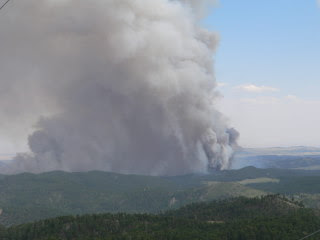
In the past I prided myself on being a
traveller and not a
tourist. Six weeks in Asia with my high school Chinese class convinced me that I would never again spend my days shopping at local "factories" or eating overpriced steak instead of Thai food while in Thailand.
Since then, I have recognized the fun in being a tourist, for a few days, in an American or European city. It was great to go to St. Louis for the weekend and hit the botanic gardens, the zoo, a prairie park, the art museum, a hockey game, Oktoberfest and several good restuarants without giving any consideration to "how people really live in St. Louis"-- we were there as tourists and it wasn't all bad.
This trip, however, confused me.
It would have been different had Happy Cricket been able to show us her Ecuador-- her community gardens, her non-tourist town, her local boyfriend. But, as it happened, we arrived as tourists. We don't speak Spanish well, we (relatively) have money, we wanted to see a lot in 11 days, we look like gringos, and, well, we are gringos. We're willing to spend $5 on a meal and we like warm showers.
We did some traveller things. We hauled our backpacks onto buses filled with locals. We walked great distances across towns rather than taking taxis. We drank fresh-squeezed green juices from glasses we knew couldn't be clean and sampled street and bus food. We ate a fabulous breakfast in a bus station.
But then, we did rich American tourist things also. We stayed

at a resort with private hot springs pools and views of the Andes. We bought a piece of original art. We payed extra for the express tickets at the TeleferiQo. I made a young woman's day when I agreed to add a $2 manicure to accompany the complete $3 pedicure she was giving me. A pedicure and a manicure! What kind of traveller does that make me?
This confusion is further emphasized by the fact that we flew business class all the way. We flew on the Mister's accumulated airline points, so we did not pay for first class, and we could only get the dates we needed flying first class. Still, it was a different world. The Prairie Dog has been with us across the country and to Scotland in coach. Nobody has ever commented. In the front of the plane, Prairie Dog was the hit of the flight attendants. They cooed over him, asked his name, and took him to show other flight attendants.
On a Miami to D.C. flight where potato chips were selling for $3 in coach, the Prairie Dog was offered warm cashews and bloody marys.


























 We also encountered this tapir with a rather large part wandering freely around the zoo. Had you been in my invertebrate zoology class this last semester you would know that being hung like a tapir is nothing compared to barnacles, whose penises can be eight times as long as the rest of their bodies, or polyclad worms, which stab each other (they're all hermaphroditic) with their two protruding members. See, I did learn something this semester. . .people pay more attention when you throw in sex along with the ecology and books.
We also encountered this tapir with a rather large part wandering freely around the zoo. Had you been in my invertebrate zoology class this last semester you would know that being hung like a tapir is nothing compared to barnacles, whose penises can be eight times as long as the rest of their bodies, or polyclad worms, which stab each other (they're all hermaphroditic) with their two protruding members. See, I did learn something this semester. . .people pay more attention when you throw in sex along with the ecology and books.





